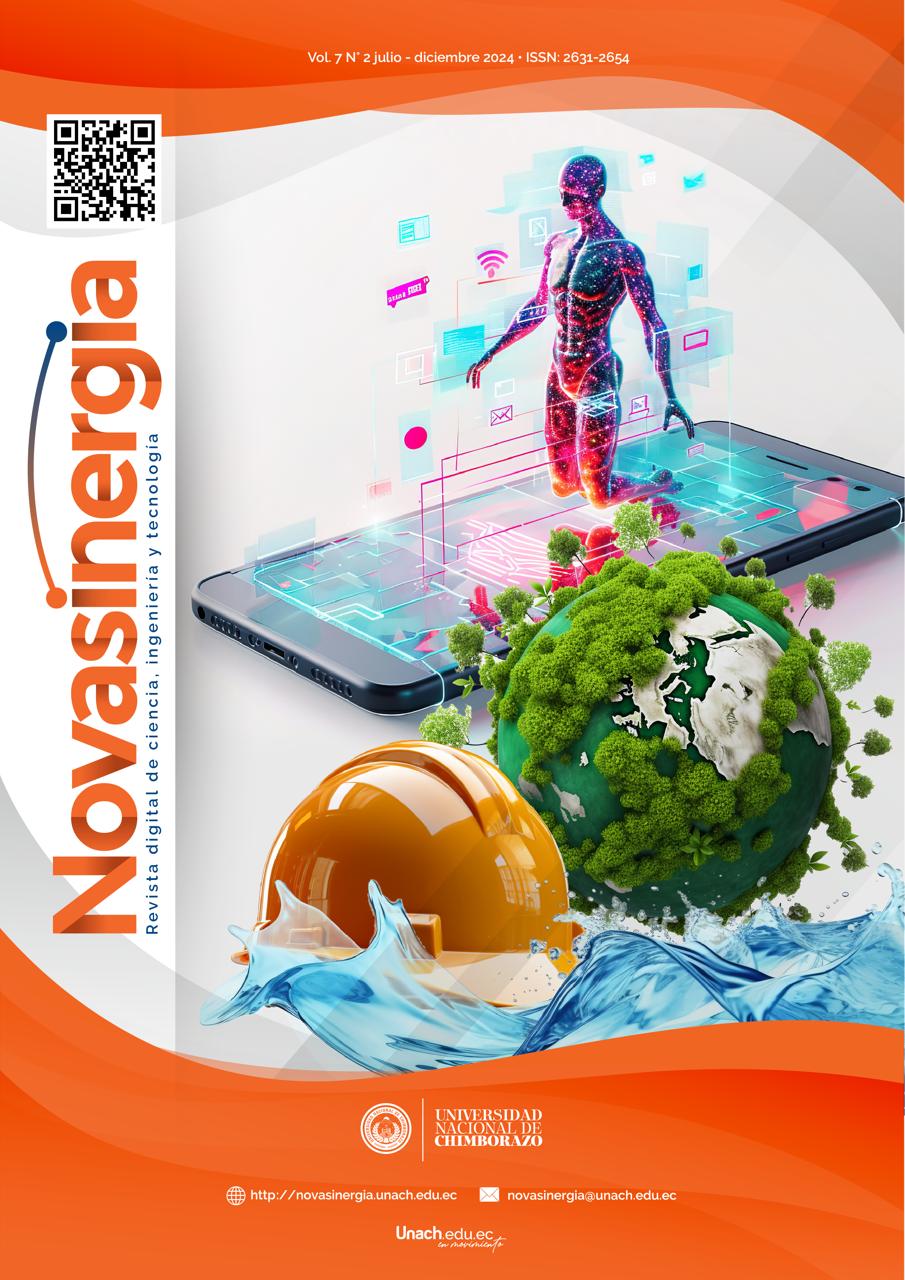Study of the behavior of the residential hourly consumption of drinking water in the Guano canton, El Rosario parish
DOI:
https://doi.org/10.37135/ns.01.14.02Keywords:
Water, Hourly flow rate, Consumption coefficient, Hourly consumption curves, Distribution networkAbstract
This study analyzes the main factors that influence drinking water consumption, as well as the hourly water consumption patterns in residential areas of El Rosario parish. A study of urban characterization was applied by means of technical data sheets and statistical analysis that showed 3 stratifications in the sector (B, C and D). Surveys were conducted to determine the factors that affect drinking water consumption, and an hourly record was made of readings of 219 water meters 24 hours a day, 7 days a week. The consumption of drinking water recorded showed increases that depend on factors such as the number of users who have the service, type of residence, sanitary units in use and other external characteristics. Hourly consumption curves were obtained for each distribution network and the coefficients of variation of maximum and minimum hourly consumption. The maximum flows occur at 13h00 with 94.76 l/h and at 19h00 with 73.46 l/h, the maximum coefficient of variation of hourly consumption (Kh_max) is 3.44, a value that exceeds that established in the current national regulation CPE INEN 5 (1992); the values of the maximum coefficients of each neighborhood are presented through georeferenced digitalization.
Downloads
References
Alulema, L., & Estrada, H. (2023). Estudio del consumo horario residencial de agua potable en las redes Saboya; Veranillo; Maldonado; Piscin de la ciudad de Riobamba. [Tesis de grado, Universidad Nacional de Chimborazo]. http://dspace.unach.edu.ec/handle/51000/10919
Arellano, A., Cáceres E., y Rubio V. (2015). Efectos de los factores socio-económicos, climatológicos y de calidad del agua, que inciden en el consumo de agua potable, caso de estudio parroquias urbanas la matriz y el rosario del cantón Guano. [Tesis de grado, Universidad Nacional de Chimborazo]. http://dspace.unach.edu.ec/handle/51000/578
Arellano, A., González J., y Gavilanes A. (2012). Método de caracterización urbanística y socioeconómica para poblaciones menores que 150.000 habitantes. doi: 10.13140/RG.2.2.17722.21446.
Benavides, H. (2013). El agua no cobrada en sistemas de abastecimiento urbanos. https://www.researchgate.net/publication/323613171_El_agua_no_cobrada_en_sistemas_de_abastecimiento_urbanos/citations.
Cáceres, S., y Chambilla I. (2019). Análisis del consumo de agua potable en el centro poblado de salcedo, Puno. Revista Investigación & Desarrollo 19(1), 133–44. doi: 10.23881/IDUPBO.019.1-9I.
CPE INEN (1992). Normas para estudio y diseño de sistemas de agua potable y disposición de aguas residuales para poblaciones mayores a 1000 habitantes. (CPE INEN 005-9-1. 1992). https://archive.org/details/ec.cpe.5.9.1.1992
Estrada Vizuete, H. P. (2019). Diseño del sistema de Agua Potable de la Parroquia El Rosario del Cantón Guano, Provincia de Chimborazo, Ecuador. [Tesis de maestría, Universidad Politécnica de Valencia]. http://hdl.handle.net/10251/120454.
Fuentes, O., Palma A., y Rodríguez K. (2011). Estimation and Location of Leaks in a Pipe Water Network Using Genetic Algorithms. Ingeniería Investigación y Tecnología 12(2), 235–42. http://www.scielo.org.mx/scielo.php?script=sci_arttext&pid=S1405-77432011000200012&lng=es&tlng=.
Izurieta, C., Arellano A., y Muñoz G. (2022). La Demografía y el Consumo de Agua Potable en los Estratos Socio Economicos Urbanos. FIPCAEC 31(7), 809–29. https://doi.org/10.23857/fipcaec.v7i1.552.
Paguay, F. (2022). Diseño de un plan de mantenimiento preventivo y correctivo para los sistemas de agua potable de la comunidad de Pardo Troje, parroquia Santiago de Quito, cantón Colta, provincia de Chimborazo. [Tesis de grado, Universidad Estatal del Sur de Manabí]. http://repositorio.unesum.edu.ec/handle/53000/3618
Tzatchkov, V. G., y Alcocer-Yamanaka, V. H. (2016). Stochastic Method Water Demand Variation Modelling. Tecnología y ciencias del agua, 5(3), 115-133. http://www.scielo.org.mx/scielo.php?script=sci_arttext&pid=S2007-24222016000300115&lng=es&tlng=.
Zúñiga, M., Calderón, E., y Tello M. (2022). Estudio del comportamiento de consumo horario residencial de agua potable en los cantones Colta y Penipe. [Tesis de grado, Universidad Nacional de Chimborazo]. http://dspace.unach.edu.ec/handle/51000/9690
Zúñiga, M., Calderón E., Tello M., Andrade A., y Arellano A. (2024). Methodology for the Generation of Hourly Residential Drinking Water Consumption Curves and Their Relationship with the Consumption of Socioeconomic Strata. Civil Engineering and Architecture 12(4), 2532–46. doi: 10.13189/cea.2024.120403.
Zúñiga, M., Llamuca M., y Vallejo J. (2023). Análisis del consumo horario residencial de agua potable del Cantón Guano. [Tesis de grado, Universidad Nacional de Chimborazo]. http://dspace.unach.edu.ec/handle/51000/10524.







